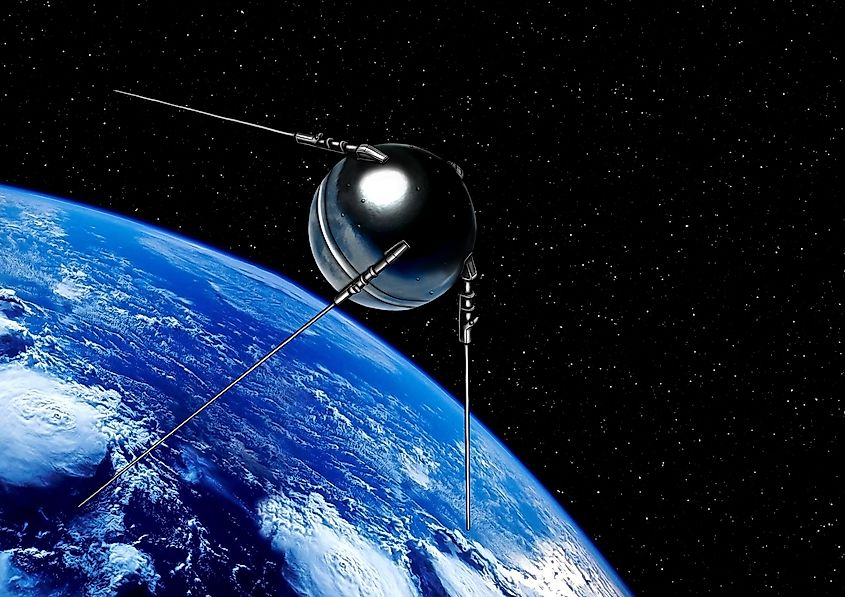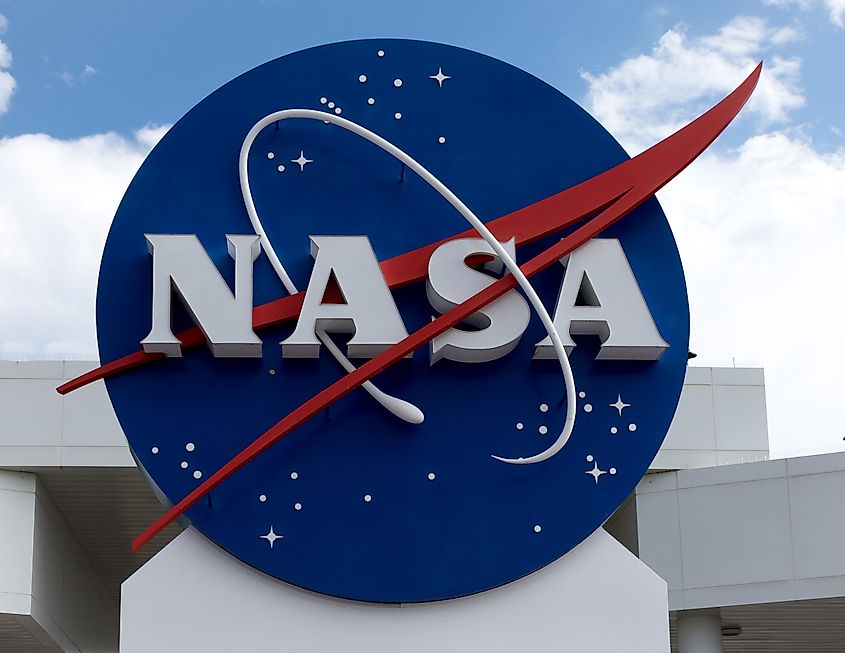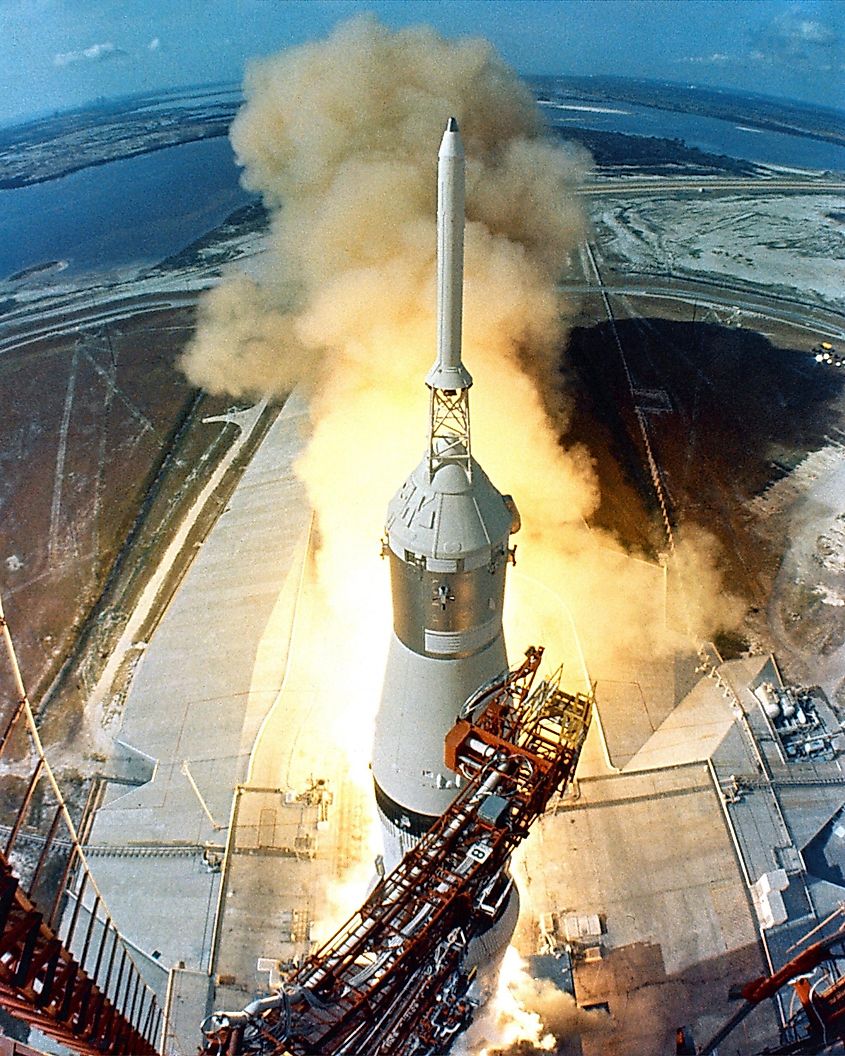
What Was The Space Race?
The Space Race is a label given to the period between 1957 and 1969 when the United States and the Soviet Union entered into a bitter rivalry over who could outperform the other in terms of technological achievements related to space travel. Tensions between the USA and the USSR had never been higher during this point, and the race towards the technological marvel that was space travel was something neither superpower could allow the other to claim first. Not only was this a race to the moon, but it was also an opportunity to show the world the supposed superiority of each nation's wealth, scientific prowess, and political philosophy.
The Origins Of The Space Race

As the Second World War drew to a close in 1945, it was no secret to anyone that the West and the Soviet Union were far from close allies. The relationship between the Western powers and the Soviet Union was strained from the beginning and was only held together by a common enemy. With Nazi Germany out of the way, the new global order was destined to be fought over by the Communist USSR and the Capitalist USA. The Cold War had officially begun.
The Cold War, as the name would suggest, never went hot. Thankfully, the United States and the USSR never engaged in direct conflict. Something that would have surely resulted in the deaths of billions due to the enormous stockpiles of nuclear weapons that had been built up over the decades. Instead of waging war directly, the fighting was done through other means.
Proxy wars were conducted in places like Afghanistan, Korea, and Vietnam. Fierce propaganda campaigns were waged around the world, trying to influence governments that had not yet picked a side. Another way in which this "war" manifested was in the Space Race, as both the USA and USSR attempted to show the world the fruits of their vastly different societies.
The Soviets Strike First

On October 4th, 1957, a Soviet satellite named Sputnik was launched into orbit aboard an intercontinental ballistic missile, making headlines around the world. While this was largely celebrated by the wider scientific community, the news that the Soviets had achieved something so spectacular was not well received back in the United States. Not only had the Soviets made an enormous leap in space travel, but they had also displayed the long-range capabilities of their rockets, which were capable of carrying nuclear warheads.
For many, it had also been a shock considering how poor the Soviet Union was in comparison to the United States, especially in the 1950s. The Soviet economy was still recovering from WWII, in which it had lost around 27 million of its citizens, the highest of any nation during the war. The fact that they were able to find the resources and scientists during this period is nothing short of a miracle.
The United States knew that they had to respond quickly. In 1958, the USA launched its own satellite into space, the Explorer I, under the leadership of Wernher von Braun, one of the leading rocket scientists in the world. Braun has become a controversial character in recent years as his dark past has begun to become the focus of attention. Braun, along with other leading scientists in the American rocket program, were once card-carrying Nazis who were smuggled back into the United States after the war. These actions were carried out under Operation Paperclip and Operation Overcast with the justification that the German scientists were going to be an integral part of continuing the fight against the Japanese Empire (who had not yet surrendered) and the looming threat of the Soviet Union.
As a result, many of these scientists escaped justice for any crimes they may have been complicit in while working under the Nazi regime. It should be noted that similar programs were also carried out by the Soviets to an even greater extent.
NASA Enters The Picture

The same year the Explorer I was launched, then U.S. President Dwight D. Eisenhower established the National Aeronautics and Space Administration, better known as NASA. This organization was tasked with the sole purpose of the rapid development of American space technology. The Air Force and elements of the CIA were also directed to keep close eyes on the Soviet program. Both nations sent spy planes to try and gain information on the other.
Despite the best efforts of the Americans and NASA, the Soviets made another significant leap in the Space Race in 1959 when they sent the first space probe to the moon. Only two years later, in 1961, the Soviets once again reached another astonishing milestone after Yuri Gagarin became the first man in space aboard the Vostok 1.
Feeling the pressure, shortly after Gagarin was launched into space, President John F. Kennedy raised the stakes and assured the world that the United States was going to put a man on the moon by the end of the decade. A feat that even some of the most optimistic scientists thought to be impossible. The Americans might have lost the early stages of the Space Race, but now a new goal was set. NASA's budget was more than quadrupled, and its staff ballooned to 34,000. Both nations were now at the final stretch of the race.
One Small Leap For Man...

The Apollo Program was established in 1962 and was tasked with landing a man on the moon by 1969. They only had seven years to complete what was, at the time, the biggest technological marvel ever recorded in history. The Apollo team worked tirelessly around the clock for years on end to try and achieve the impossible.
In 1967, after years of progress, the Apollo Program suffered an enormous setback after three astronauts were killed while aboard a spacecraft during a training exercise. The loss of the astronauts was devasting to the team and was seen as humiliating on an international level.
Despite the tragedy, in 1968, NASA launched Apollo 8, the first manned mission to orbit the moon. Riding off the confidence of this success, NASA felt as though it were ready to reach its dream of landing on the moon only one year later.
In 1969, NASA launched the now legendary Apollo 11 mission. Aside from a few minor setbacks here and there, the mission was relatively smooth. On July 20th, Neil Armstrong became the first man ever to set foot on the moon, which remains one of the defining moments of American history and the entire 20th century.
Even though the American space program was outmaneuvered by its Soviet counterpart early on, historians largely agree that the United States ultimately won the space race by beating the USSR to the moon.
After spending billions of dollars on NASA and their mission to the moon, space travel and other similar studies fell out of favor amongst the American government and public alike. By the middle of the 1970s, the willpower and funding to recreate the success of Apollo 11 was no longer there. As a result, no one has been back to the moon since 1972.











